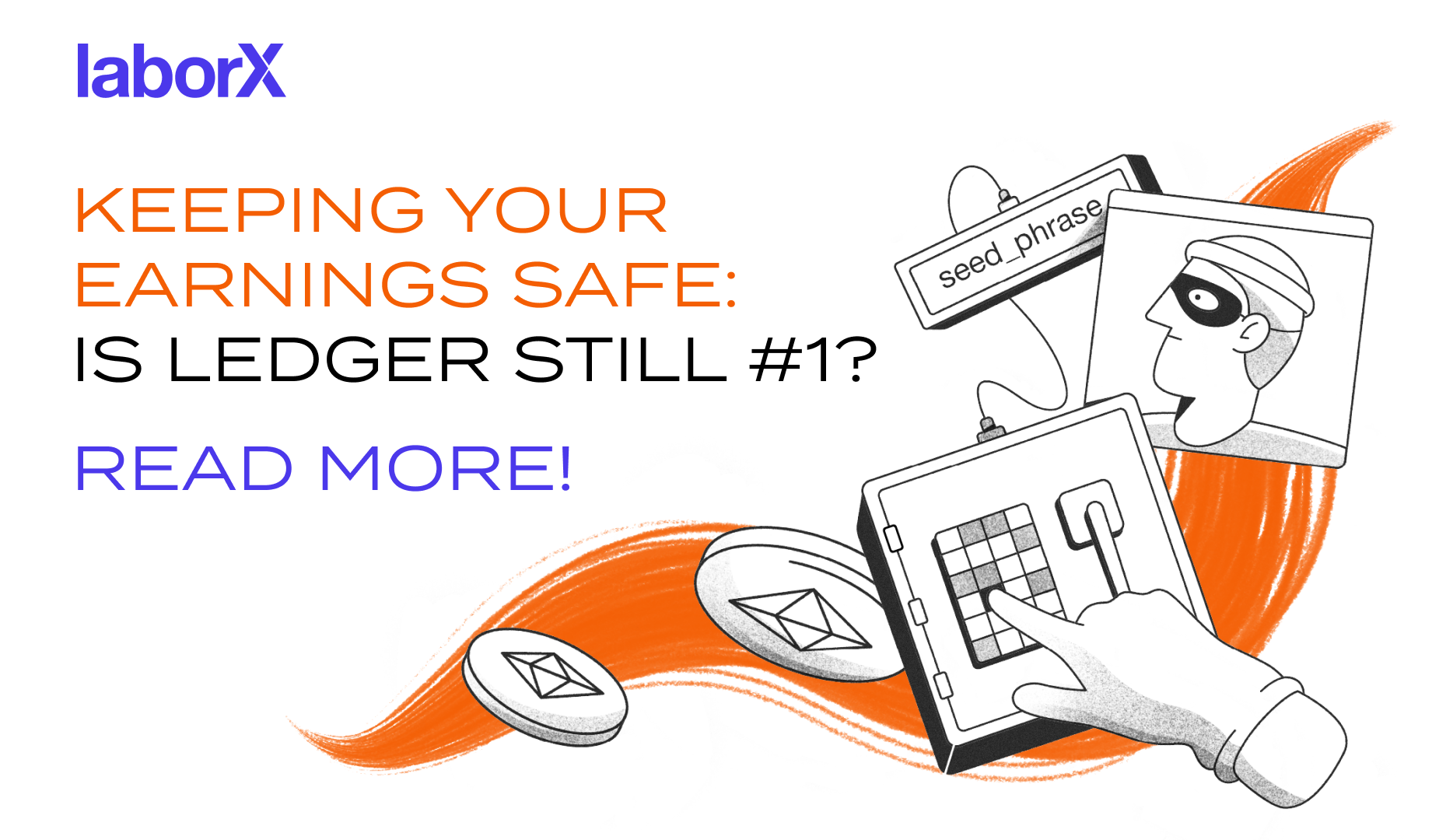
Embracing Change: HR in the World of Digital Assets
Hotcoin’s HR shares her journey from traditional industries to the world of Web3 and crypto, highlighting key insights on thriving in this space.
Read
The recent introduction of a new feature from Ledger has turned the spotlight back onto wallet security.
For those who don’t follow the crypto news 24/7/365, Ledger is a popular brand of hardware wallet: a device that is designed to manage users’ private keys securely, and allow them to make transactions while ensuring that sensitive information is never exposed to the web – which might present vulnerabilities that a hacker could exploit to steal their crypto.
Ledgers support many different currencies and tokens, and generate private keys and addresses for each from a single master “seed” phrase: a unique list of words. Users must keep a copy of that list safe somewhere, since if they lose it, they lose access to their crypto. For some users, that’s simply too much of a responsibility.
Ledger’s Recovery tool enables users to split their seed into three encrypted fragments, and hold them with trusted providers. If they ever lose their Ledger, they can recover their seed phrase by going through a process of identity verification with two of these parties.
The crypto community has reacted to the release of this new feature with dismay and anger for several reasons:
Ledger has responded to these accusations with a number of tweets and explanations (at least one of which has since been deleted). They make the point that the Recovery tool is an optional update; that there are many ways to attack a wallet and that using any wallet requires a ‘minimal amount of trust’ that open-sourcing the firmware would not address; and that the user’s explicit consent is required (with a physical action, i.e. a button press on the device) whenever the keys are used. The reality is that users have always trusted Ledger not to deploy malicious firmware. None of this has entirely satisfied users.
There are lots of nuances and misunderstandings here, and the mistakes made by Ledger appear to have been as much about messaging and a lack of clarity as they have been about security. Yet still, the whole episode can be condensed into a simple question: are Ledgers safe to use?
Or, taking a step back, what is the safest way to store your hard-earned crypto?
Anyone who works in the blockchain space and gets paid in crypto will have grappled with issues around safeguarding and maximising the value they earn. Most users will need to cash out at least a portion of the tokens they receive as pay, but in many cases they will want to hold value on-chain – either because they consider the blockchain more trustworthy or convenient than banks or other financial platforms, or because they hope to benefit from future rises in value of the tokens they receive.
If you’re cashing tokens out to fiat then you probably won’t be holding them on-chain for very long. All you need is a suitable exchange that supports your local currency. A simple hot wallet (that is, a wallet that is always connected to the web) is probably all you need.
But if you plan to keep funds on the blockchain for one reason or another, especially if it’s a significant amount of money, then you’ll want to look into more secure solutions.
If you’re getting paid in crypto and want to make sure your cash is always accessible and there’s no risk of sudden loss of value, then you’ll probably want to receive stablecoins (e.g. USDT, USDC or Dai). If you’re paid in other crypto (like ETH or BTC), you’ll need to convert to fiat quickly – or, if you plan to hold those funds on-chain, swap them into stablecoins as quickly as possible, to avoid the fluctuating prices for which crypto is so well known.
There might be a few reasons to hold a balance of stablecoins on-chain:
Stablecoins make sense when you:
But what about saving for the future?
It’s not just your current earnings you’ll want to keep safe. There may be times when you hold a small or large amount of crypto for months or years, hoping to take advantage of any long-term appreciation in price.
For example, if you had earned bitcoin in 2015 (when BTC was trading at $200-300) and been in a position to hold onto it until now, it would be worth around 100x today. Looking at it another way, three days of work in 2015 would be roughly equivalent to a whole year of work in 2023. Given that having a pot of 25x your annual expenses is often considered enough to retire early, that could have given you some attractive options.
If you plan to save crypto this way, then you should only do so with funds you don’t need, because there’s no guarantee the crypto you hold will rise in value, or even hold its current value.
It also relies on you holding those coins safely for all those years. Unfortunately, there are plenty of examples of crypto investors losing their private keys. In fact, an estimated 4 million BTC have been lost for good that way. To hold crypto securely, you’ll need a suitable wallet.
For holding and managing crypto, you have several different options. All of these have advantages and disadvantages, and you’ll need to weigh up the pros and cons carefully before making a decision.

Which wallet you choose will depend on your circumstances, what you need it for, and the amount of crypto you need to store.
If you are holding large amounts of crypto, then a cold wallet or hardware wallet is likely a good idea. If you already use a Ledger, you may have questions about its security since the latest announcement.
Ledger is probably no less secure than it ever has been. You will need to decide whether or not you want to use the new Recovery feature; if not, then don’t install the opt-in update.
Unfortunately, Recovery has called into question the way Ledger has previously communicated its functionality and benefits, and the fact that its firmware is closed source (unlike some other hardware wallets) means it’s impossible to be sure how safe it is.
This is a live issue that is still evolving as Ledger responds and clarifies its position. To read answers to some key questions, check Ledger’s Twitter feed. If you’re really concerned, you can check out other hardware wallets and reviews online.
.

Hotcoin’s HR shares her journey from traditional industries to the world of Web3 and crypto, highlighting key insights on thriving in this space.
Read
Discover how Web3 is reshaping HR practices with insights from a leading expert in the field.
Read
Discover Base's innovative L2 solution addressing scalability, security, and user experience challenges in crypto. Learn about Base Incubator by LaborX, fostering growth and innovation within the Base ecosystem.
Read